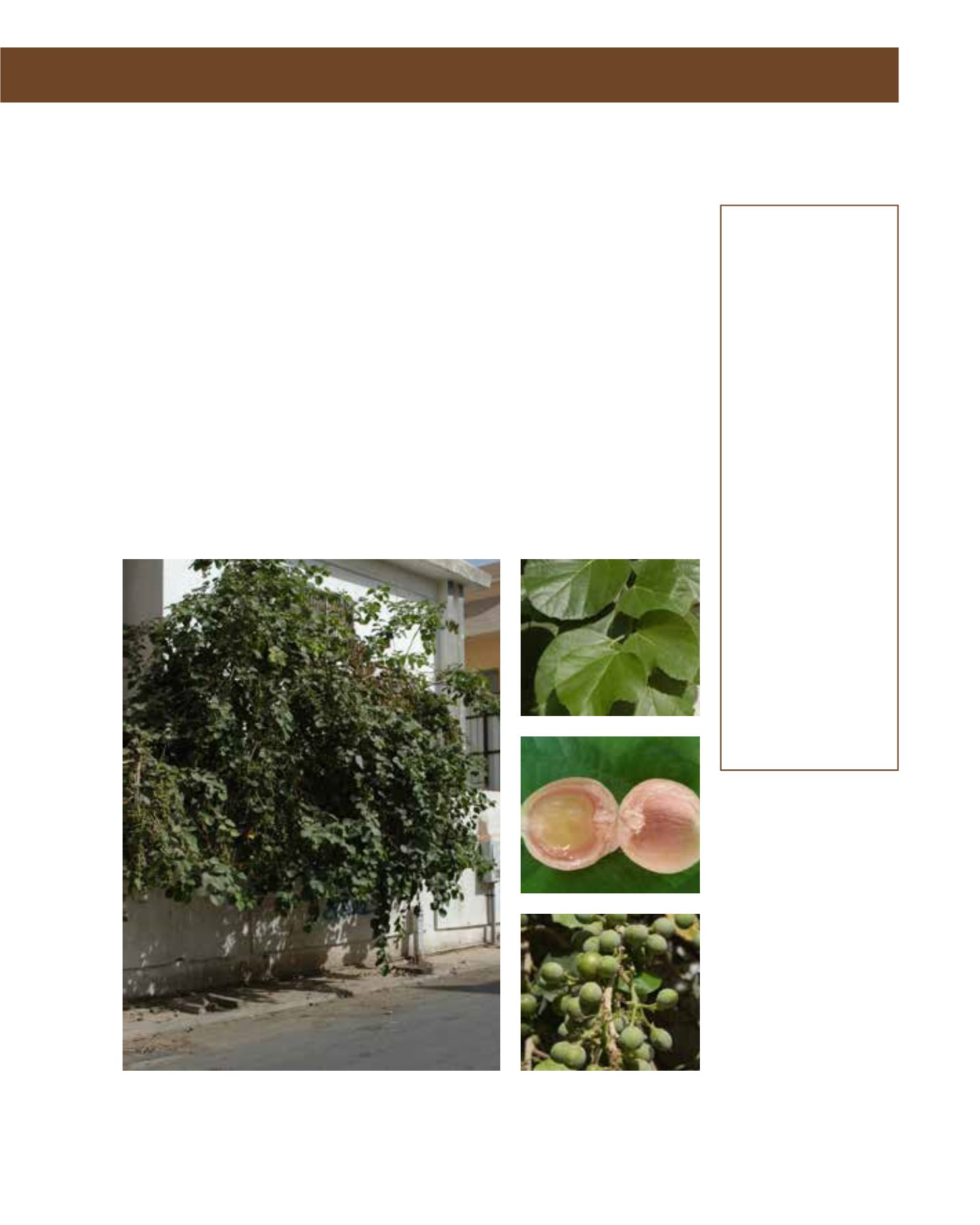

GENERAL
Origin
:
tropical
Vigour
:
normal growth
rate
Humidity
:
very arid, semi-
arid, semi-humid,
very humid
Propagation :
sowing and
pricking out,
cuttings
Maintenance :
moderate
CONDITIONS
Urban climate :
resistant
Dessication :
resistant
Stagnant water :
vulnerable
Irrigation
:
high
Salinity/ppm :
high (5000 ppm)
Hardiness
:
0°C
SHAPE
Type
:
tree, shrub
Height
:
3 m-10 m
Spread
:
4 m-10 m
Foliage
:
deciduous
FLOWER
Colour
:
white
Size
:
0.5 cm
Period
:
March - April
FRUIT
Type of fruit :
drupe(fleshy/
juicy)
Fruit size
:
2 cm - 3 cm
Toxicity
:
produced for
food, edible, fruit
The Indian Cherry or Banbar is native to the eastern Mediterranean basin, extending as far as
eastern India. It grows moderately fast to some 5 metres in height and about 6 metres in width.
Exceptionally aged trees may reach up to 10 metres in height. Heart-shaped leaves are deciduous,
alternate and about 20 cm long on stalks of 5 cm in length. Male and female flowers are borne
on different trees. They appear in spring on panicles in white or cream-coloured. The drupes are
round and some 3 cm in diameter. At first, they are green, turn yellow and become orange when
fully ripened in summer. Trees start flowering at the age of 5 years. Young branches are hirsute
and become glabrous later on. They show distinct leaf scars. The bark is light grey and rough. Its
spreading roots prevent soil erosion. Thanks to its fleshy, sweet fruit it has been valued and intro-
duced to tropical countries long ago. The kernel, too, is edible. Banbar has some healing proper-
ties for coughs and sore throat, and applied externally it alleviates itchy insect bites. Skin diseases
may be treated with powdered bark. The foliage can be prepared as a vegetable. Banbar is found in
deciduous woodlands, but also along river banks. It may become naturalised, but does not invade
intact ecosystems. It tolerates drought, frost and even some shade when young. In summer, ample
water should be available. Hard pruning is possible and the tree can even be coppiced. Seedlings
show variable yield, and so hardwood cuttings are the preferred method for propagation.
118 118
Cordia myxa,
Boraginaceae
Banbar,
Indian Cherry
















